Knitting for Speed & Efficiency
Ever wished you could knit faster? Maybe you’ve got a gift knitting deadline looming, or perhaps you’re just eager to see your project finished. For years, I’ve been obsessed with the idea of knitting faster — I’ve attended speed knitting competitions and even hosted our own speed knitting event at Knit City a few years back. In this post, we’ll explore some practical tips and techniques to boost your knitting speed, while also considering the why behind our desire for speed.
Different Knitting Styles: Finding Your Fit
The way you hold your needles and yarn can significantly impact your knitting speed. Years ago, I learned from a workshop with Stephanie Pearl-McPhee that there are basically two kinds of knitters — those who knit for a living, and those who don’t. We can look to those who do production knitting for tips on speed and efficiency.
Generally “picking” or Continental style (holding the yarn in your left hand) is the most efficient way to generate a knit stitch, and so historically we see pickers knitting a lot of garments in the round or garter-based lace. “Throwers” or English Style knitters (holding the yarn in your right hand) generally knit more stockinette-based lace, and garments are typically worked in pieces.
Finally, a third style of knitting, lever knitting, is often used by people who knit for a living. It’s the most ergonomic way to knit and allows people to knit for 8-10 hours a day without any repetitive strain. Lever knitting makes knitting or purling equally easy to do, and the stitches are precise and even. So, lever knitters can easily knit everything.
Here’s a quick rundown of some common styles:
English Style
Holding the yarn in your right hand, “English Style knitting” involves a “throwing” motion to wrap the yarn around the needle. I carry the yarn in my right hand like a little shuttle that moves back and forth to deliver yarn to the tips of the needles. The key to speeding up with English Style is to minimize unnecessary movement.
If you’ve ever doubted English Style as a speedy style of knitting, check out one of the fastest knitters in the world, Hazel Tindall from the Shetland Islands. In a handknitting competition in 2008, Hazel used 5 mm knitting needles and knit 262 stitches in 3 minutes (60 stitches to a row). Second place in that same event went to Miriam Tegels of the Netherlands who knit 243 stitches in 3 minutes with a continental knitting style.
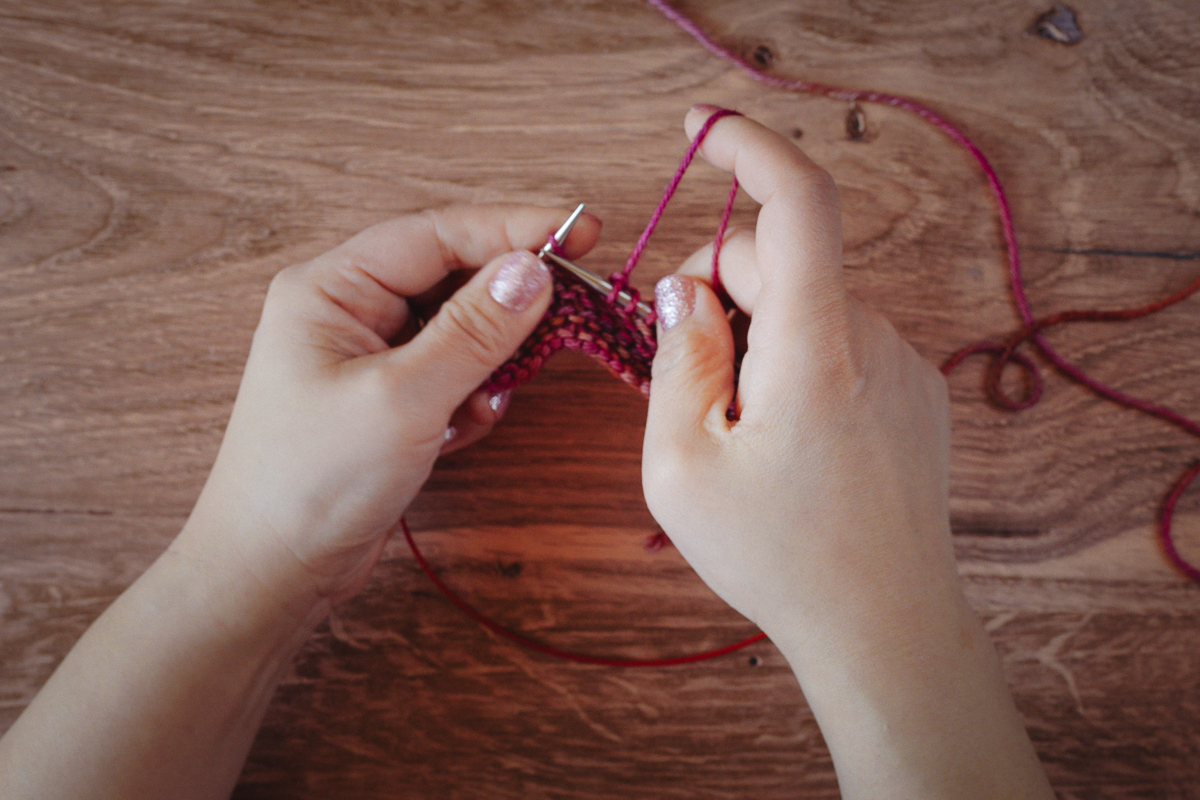
Continental Style
In Continental Style knitting, the yarn is tensioned in your left hand, and the right needle “picks” the yarn to create new stitches. This style of knitting theoretically leads to faster knitting speed due to minimal hand movement.
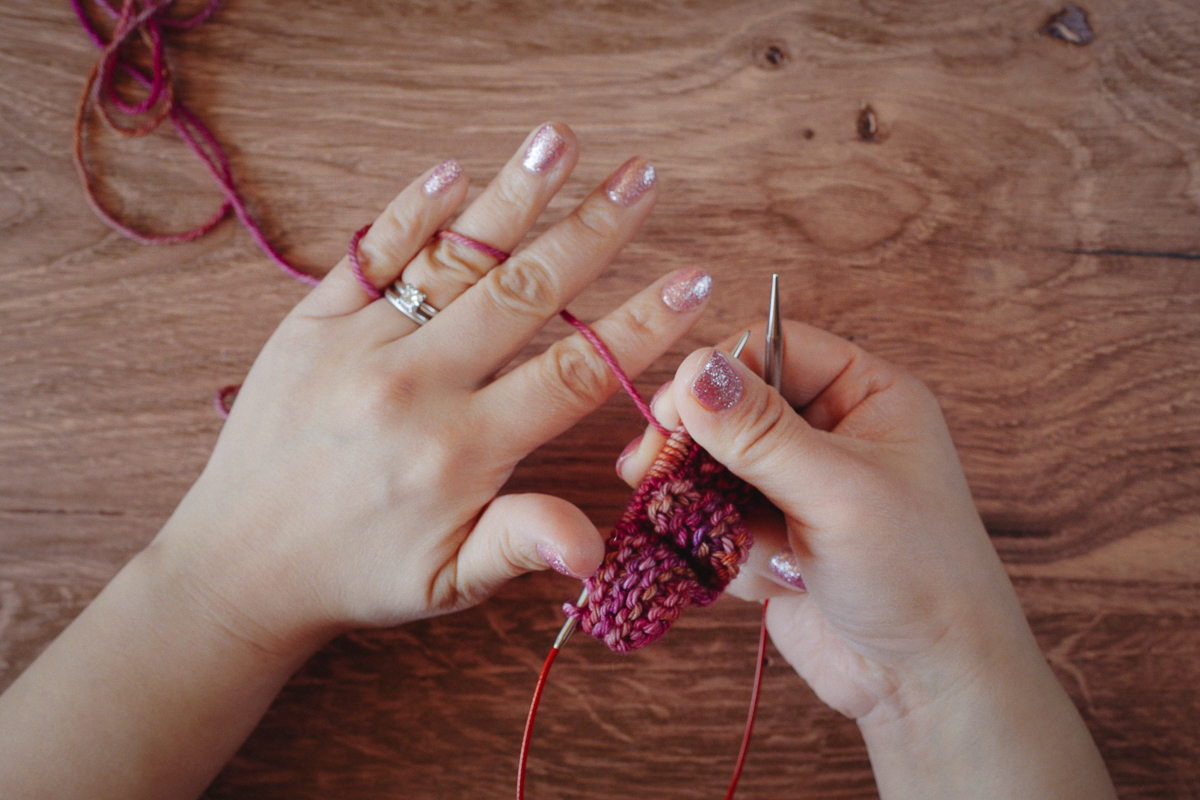
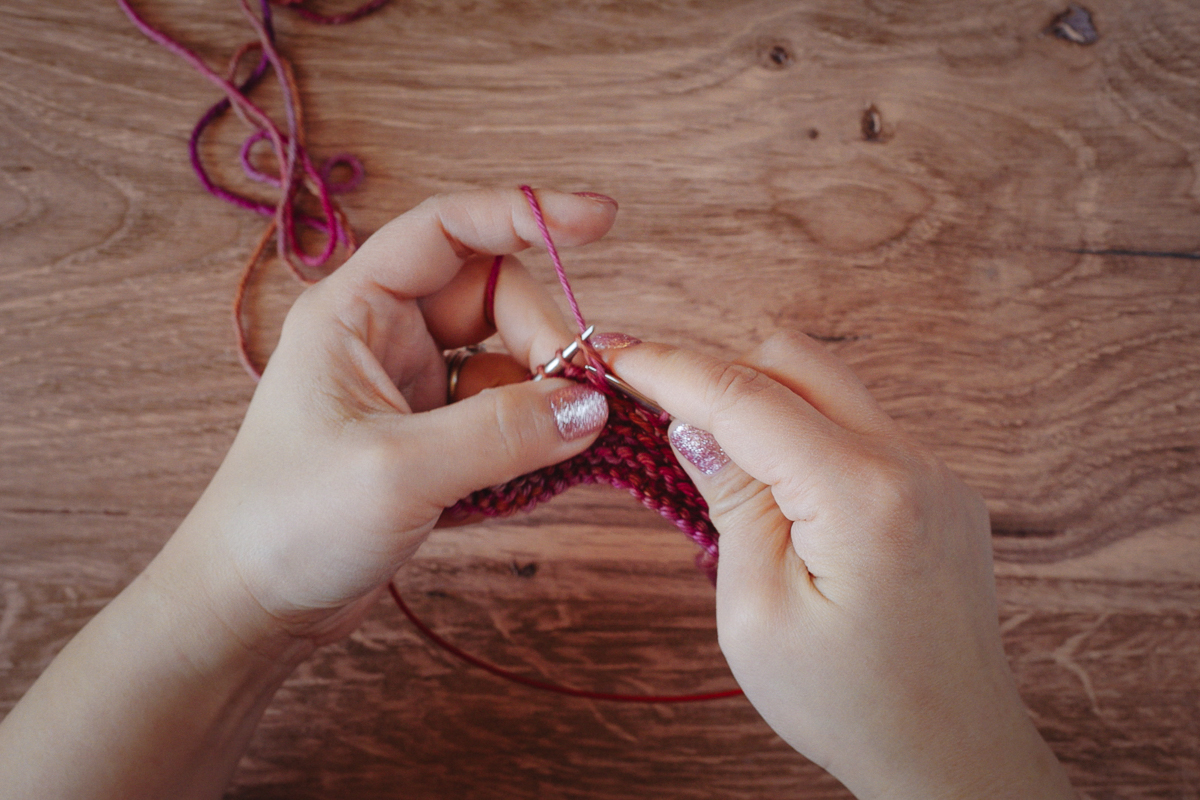
Lever Style (Irish Cottage Knitting)
Lever knitting, also known as Irish cottage style or pivot knitting is a style of knitting that can be very productive. Years ago, I stumbled on the the Heart Strings website and discovered a tutorial on how to knit “lever-action” English style. And then at Vogue Knitting Live in NYC in 2011, I took the Stephanie Pearl-McPhee/Yarn Harlot’s “Knitting for Speed & Efficiency” class and left absolutely ecstatic. Ever since then, I’ve been trying to incorporate what I learned there into my own knitting practices… most specifically to improve my knitting speed and efficiency.
A while ago, I saw a video of Stephanie Pearl-McPhee and her “Irish Cottage Knitting” and knew, I had to learn that. Here’s the first video of her knitting on a sock, followed by a second video of her knitting with the straight needle held under her armpit.
Stephanie’s criteria for lever knitting is simple — one needle held stationary (under the armpit, held in a makkin or knitting belt, or held like a pencil) and the yarn tensioned on the lower fingers of the right hand. Tensioning the yarn lower down on the third, fourth and fifth fingers allows the index finger and thumb to do more of the sensitive manipulation of the stitches. The middle and ring fingers that are holding the yarn, act more like a sewing machine shuttle. Arcing back and forth to catch the tip of the needle.
Holding the needle like a pencil, this style uses a lever-like motion with your finger to wrap the yarn. It can be particularly beneficial for long straight needles or when using a knitting belt. Stephanie’s method of lever knitting has a different method of yarn tensioning than on the HeartStrings site, but the fundamental concept is the same.
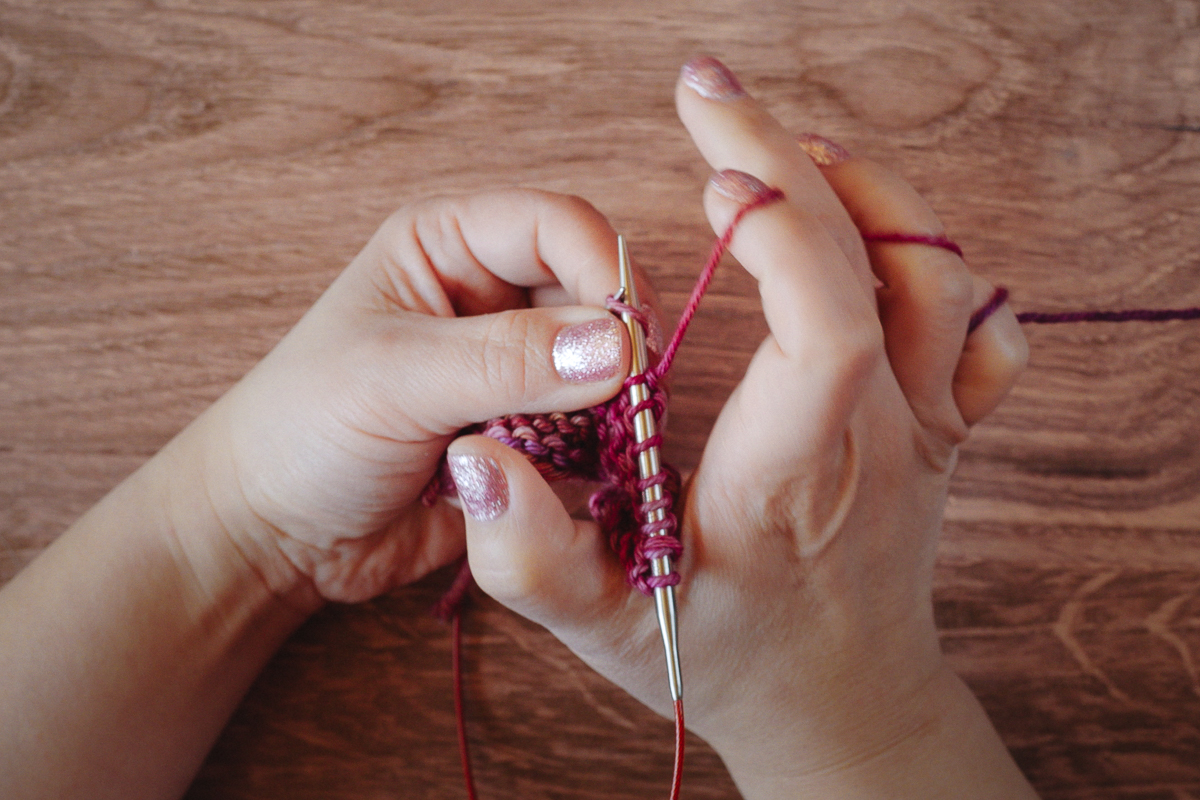
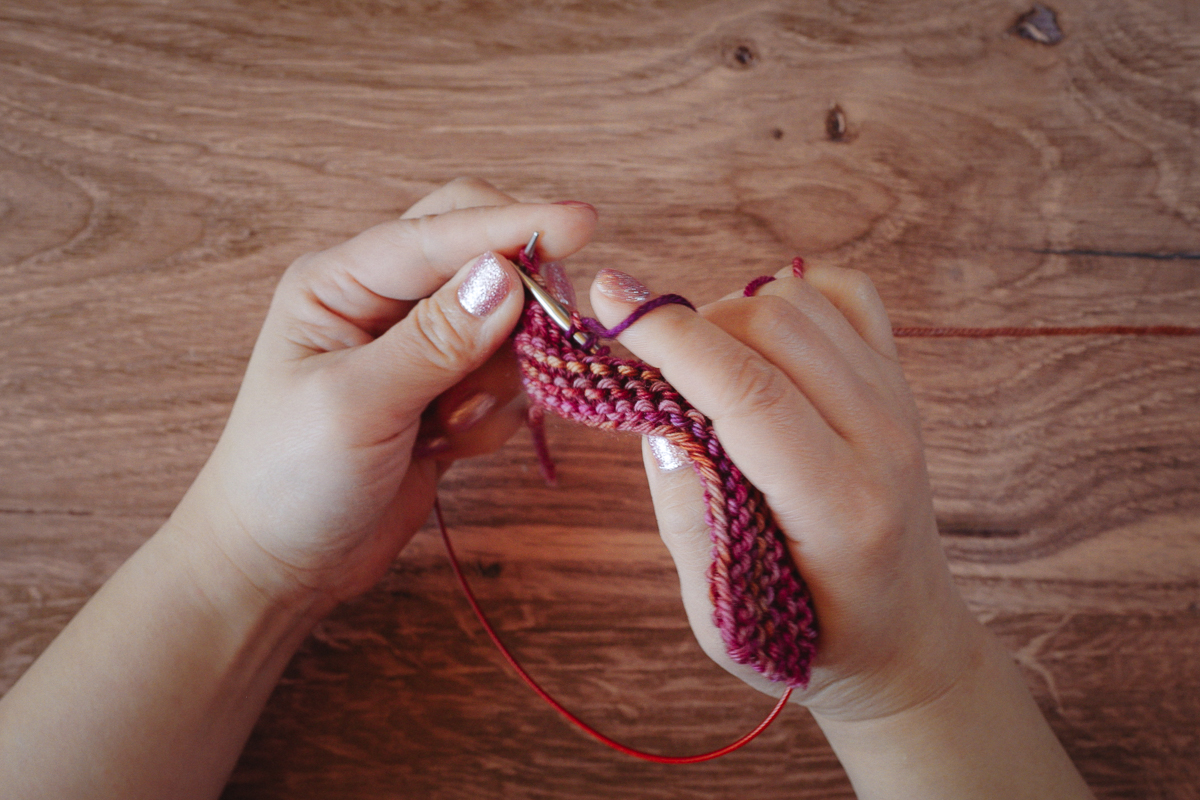
As a long-time English style knitter, learning to knit lever style still took some practice and adjustment. Stephanie’s suggestion was to practice daily for at least 21 to 30 days in order to develop the micro-muscle movement memory that is needed. Every change simply requires a bit of time and practice.
If you are interested in learning to knit faster (want to get through that stash? I do!), I would encourage you to seek out Stephanie’s class (where available) and see first-hand how her teaching can improve your knitting speed. She also gives plenty of tips and techniques for speeding up your knitting, should you choose to stick with your picking or throwing. You can check out her Patreon page here.
Efficiency Tips for Speedier Knitting
Beyond knitting styles, here are some additional tips to optimize your efficiency:
- Minimize Movement: Focus on small, controlled movements with your fingers and hands. Avoid unnecessary wrist or arm motions.
- Active Left Hand: Keep your left hand engaged in pushing up stitches, ensuring they’re readily available for knitting.
- Needle Choice: Consider using smooth needles (like metal) to reduce friction and allow stitches to slide easily. Needles made from bamboo or wood might be more “grippy” and slow down your knitting.
- Stitch Management: Keep stitches scrunched up on your left needle and spread out on your right needle for smoother workflow.
- Avoid Tight Stitches: Knitting too tightly at the needle tips can slow you down. Ensure your stitches are formed on the main shaft of the needle.
Also, check out the Bellwether’s post about the fastest knitters in the world and see how they knit. You’ll notice how one needle is always held stationary, and the hands are making tiny movements. The hand that is tensioning the yarn does not actually drop the needle, and so there is no time lost to dropping and picking up the needle again. If you feel like you need a support group, there’s even a Ravelry group for production knitters. Have any of you tried this and successfully switched to lever knitting? I would love to hear from you in the comments!
And as for speed, we did a little speed check at the beginning and end of class and the average around the class was between 20-30 stitches per minute. Stephanie said that lever knitters start at 60-80 stitches per minute. Eunny Jang has spoken about how she knits 75-80 stitches per minute, but how productivity is actually achieved by always knitting as opposed to fast knitting.
Planning Ahead: The Key to True Efficiency
Knitting fast is great, but knitting correctly is even better! There’s no use in knitting 100 stitches a minute if you’re knitting the wrong instructions. Here’s where planning comes in:
- Understand Your Pattern: Read through the pattern carefully, anticipate upcoming instructions, and ensure you have enough yarn.
- Avoid Mistakes: Mistakes mean ripping back, which ultimately wastes time. Careful attention to your pattern can prevent this.
Another Perspective: Why the Rush?
While speed can be satisfying, it’s important to remember why we knit in the first place. Enjoy the process, savour the feel of the yarn, and appreciate the rhythm of the stitches. I feel like I’ve been knitting on my Nightshift shawl for ages now, but honestly seeing the colours combine row after row, I’m enjoying this so much.
Don’t sacrifice good posture or risk injury for the sake of speed. After years of experiencing arm, shoulder and wrist issues, it was confirmed by a doctor that I have developed carpal tunnel syndrome (CTS) and that I need to lighten up on how and how much I knit. So I’m looking hopefully towards lever knitting as a method of injury-free and more ergonomic knitting.
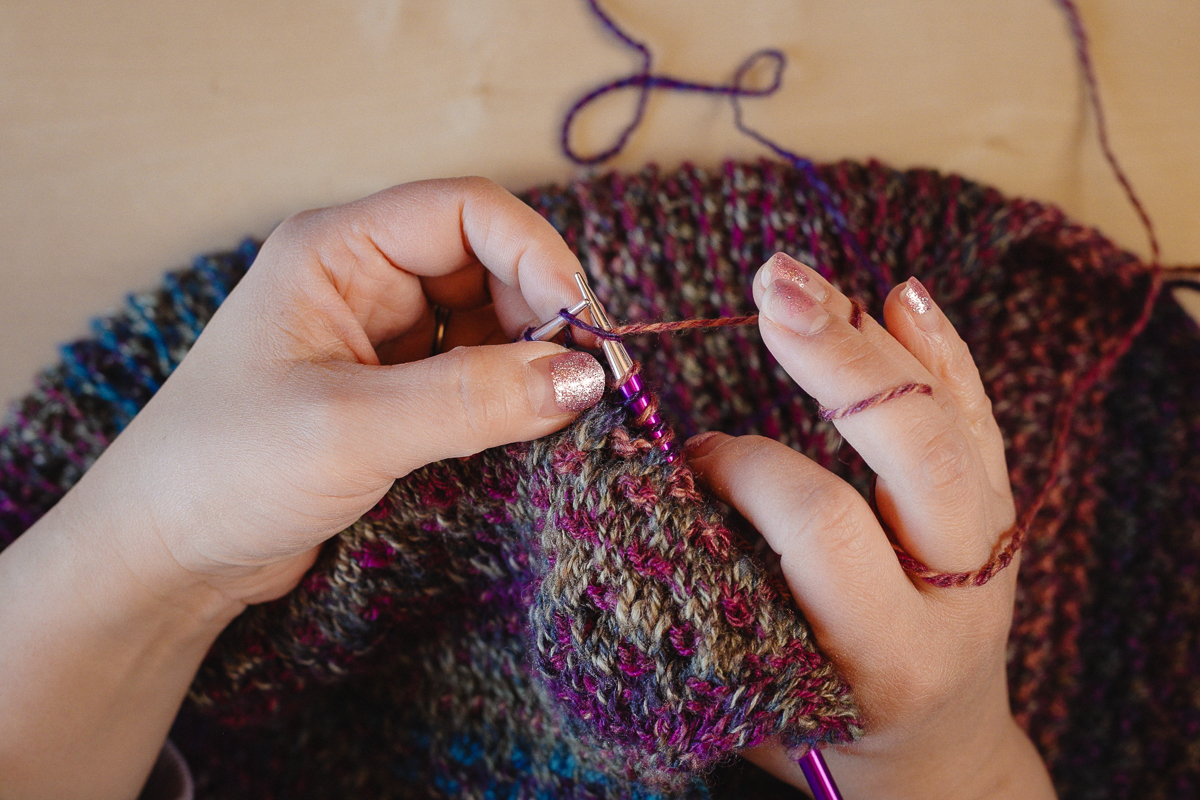
Ultimately, the goal is to find a balance between speed and enjoyment. Experiment with different techniques, optimize your efficiency, but also remember to relax and savour the journey.
Originally posted on February 17, 2011
The post Knitting for Speed & Efficiency appeared first on SweetGeorgia Yarns.
Comments
Post a Comment